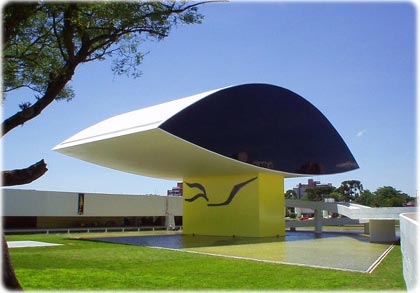
Carlos Justiniano Ribeiro Chagas was born on July 9, 1879, in Oliveira's city, west of Minas Gerais. Father orphan to the four years, soon in the adolescence it took the responsibility of the family. And in 1897, he enrolled in the University of Medicine of Rio de Janeiro.
Along the course, two teachers mark in a decisive way his formation. Miguel Couto presents to Chagas the notions and the practice of the modern clinic and Francisco Fajardo introduces Chagas in the experimental study of the tropical diseases. Like this, two roads open up for Chagas in elapsing of his medical course: the clinic and the scientific research. Due to the work accomplished by Chagas in his doctorate theory, Oswaldo Cruz requests him, in March of 1905, for the mission of controlling the malaria epidemic in the city of Itatinga, in São Paulo. There, Chagas accomplish the first successful campaign against the malaria in Brazil.
Coming back from São Paulo, Chagas entered, in 1906, in the pictures of the Institute Oswaldo Cruz (IOC). In the following year, he was sent by Oswaldo Cruz to combat a malaria epidemic in Xerém, in the Baixada Fluminense.
With the success reached in these two campaigns, still in 1907 Chagas it's assigned by Oswaldo Cruz of organizing, with Belisário Penna, doctor of the General Management of Public Health, the combat the malaria among the workers of the Central Railroad of the Brazil, in the north of Minas Gerais.
In the spare times, he examines the blood of animals and insects in search of parasites. Like this, Chagas identify in the blood of a monkey a new protozoan species, of the gender of the tripanossomos, to which gives the name of Trypanosoma minasense.
In the same time, the engineer Cantarino Mota, responsible for the works of the railroad, he gets the attention of Chagas for the presence of an insect that proliferates in the openings of the walls of the houses, and he feeds at night of their residents' blood. For attacking the face preferentially, it was known by the local population as "barber". Chagas take some of those insects to his laboratory and, examining them the intestine, it identifies the presence of protozoa with certain characteristics of the Trypanosoma minasense.
Chagas send barbers' copies infected with the parasite to Oswaldo Cruz, asking that it feeds the insects in monkeys created at laboratories. Almost one month later, Oswaldo Cruz communicates him the tripanossomos presence in the blood of the animals, that they got sick. Chagas return immediately to Rio de Janeiro, where verifies if doesn't treat of the Trypanosoma minasense, but of another tripanossomo until then unknown. With the other researchers' of the Institute support, he unmasks the evolutionary cycle of the new protozoan almost entirely, to which gives the name of Trypanosoma cruzi, in honor of Oswaldo Cruz.
After having found a cat infected with the new tripanossomo, on February 14, 1909 Chagas examine a child's blood with fever and it identifies the presence of the parasite.
The girl Berenice is the first case of the disease to which would be named of disease of Chagas, provoked by the Trypanosoma cruzi that the barber transmits to the man's organism.
The work of Chagas is only in the history of the medicine: the discovery, the study and the description of a disease accomplished by a single researcher.
When Osvaldo Cruz died, in 1917, Chagas assumed the direction of the Institute de Manguinhos.
The feat of Chagas was worth him the enviable indication to the prize Nobel, in 1921, however he didn't win the prize.
On November 9, 1934, Chagas were found dead in the bed. He lived only 56 years, enough to discover a disease that still today, according to the World Organization of the Health, it affects 18 million people in Latin America, six million of them only in Brazil.
Barber









